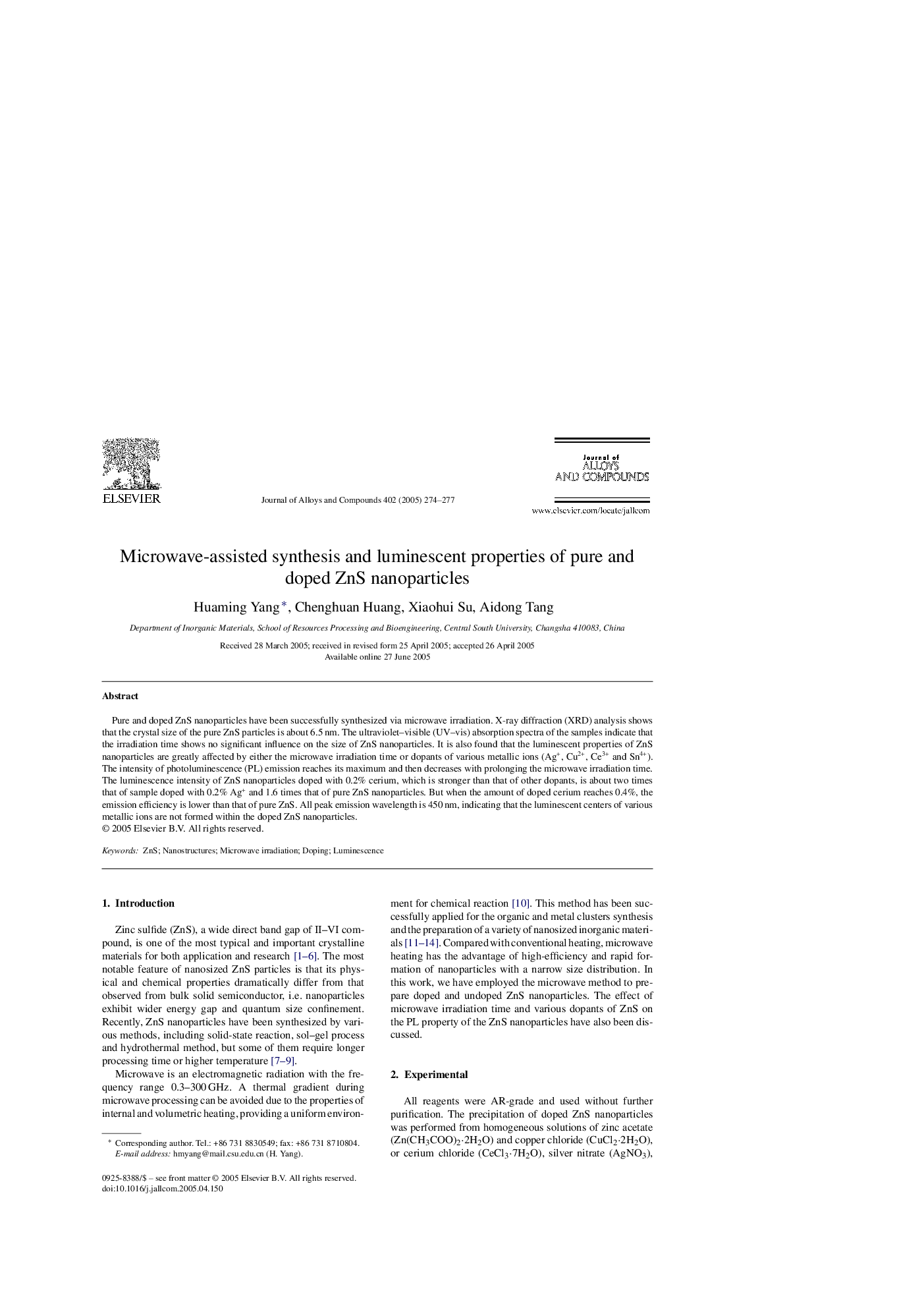| Article ID | Journal | Published Year | Pages | File Type |
|---|---|---|---|---|
| 9803361 | Journal of Alloys and Compounds | 2005 | 4 Pages |
Abstract
Pure and doped ZnS nanoparticles have been successfully synthesized via microwave irradiation. X-ray diffraction (XRD) analysis shows that the crystal size of the pure ZnS particles is about 6.5Â nm. The ultraviolet-visible (UV-vis) absorption spectra of the samples indicate that the irradiation time shows no significant influence on the size of ZnS nanoparticles. It is also found that the luminescent properties of ZnS nanoparticles are greatly affected by either the microwave irradiation time or dopants of various metallic ions (Ag+, Cu2+, Ce3+ and Sn4+). The intensity of photoluminescence (PL) emission reaches its maximum and then decreases with prolonging the microwave irradiation time. The luminescence intensity of ZnS nanoparticles doped with 0.2% cerium, which is stronger than that of other dopants, is about two times that of sample doped with 0.2% Ag+ and 1.6 times that of pure ZnS nanoparticles. But when the amount of doped cerium reaches 0.4%, the emission efficiency is lower than that of pure ZnS. All peak emission wavelength is 450Â nm, indicating that the luminescent centers of various metallic ions are not formed within the doped ZnS nanoparticles.
Related Topics
Physical Sciences and Engineering
Materials Science
Metals and Alloys
Authors
Huaming Yang, Chenghuan Huang, Xiaohui Su, Aidong Tang,
